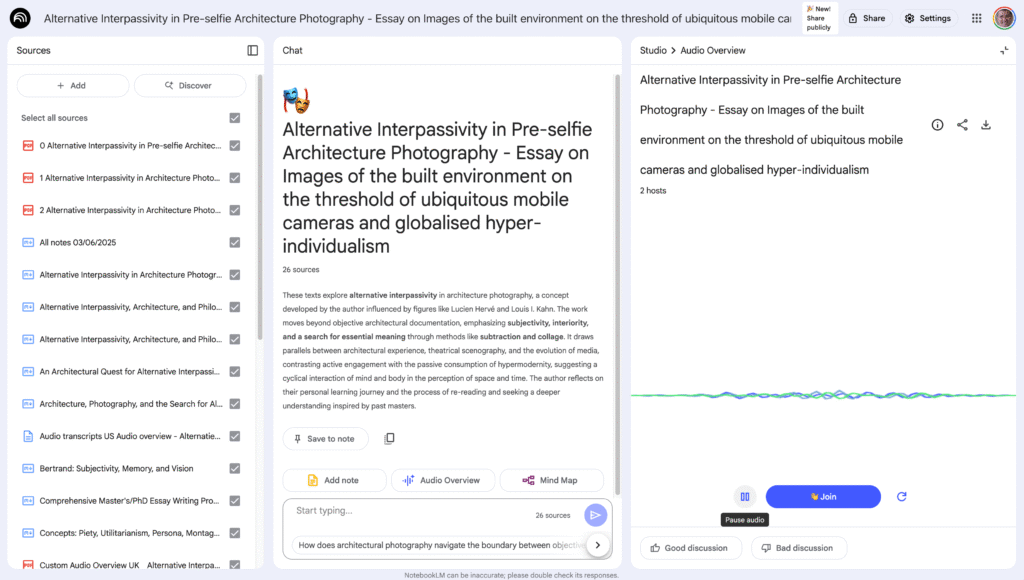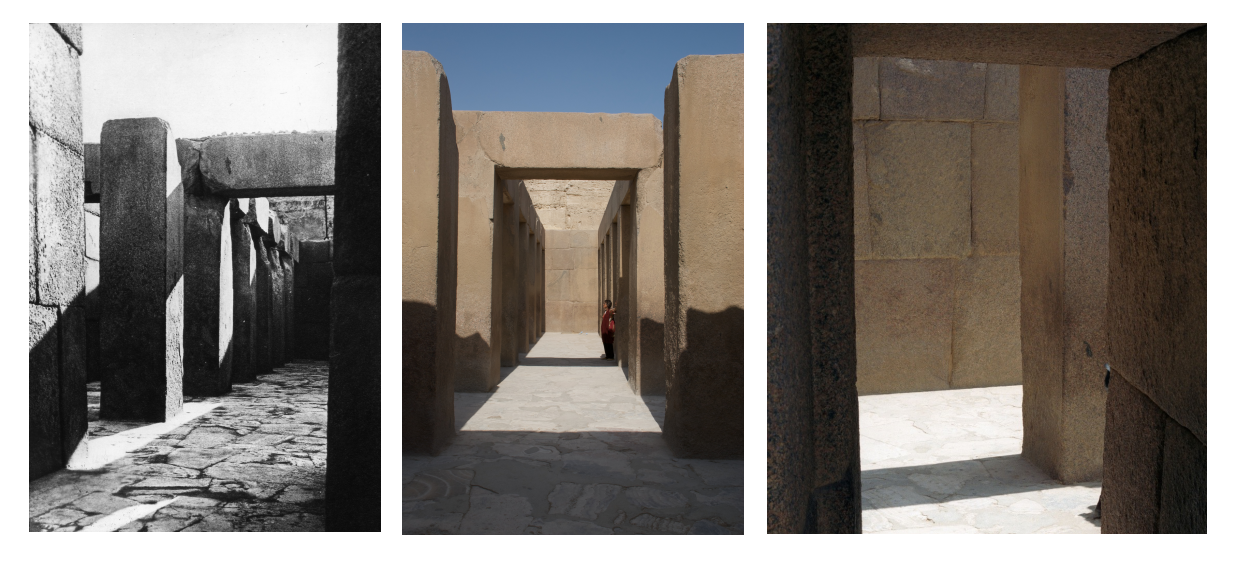Pre-Selfie Architecture Photography: Alternative Interpassivity Before Mobile Ubiquity’
My research originally dated 2006 explores alternative interpassivity in architectural photography—a concept I developed from 2005, inspired by the thinking of among others: ‘my master’ Lucien Hervé (1910-2007), the French-Hungarian photographer and longtime friend of Le Corbusier; American modern architect Louis I. Kahn (1901-1974); and Slovenian Marxist philosopher Slavoj Žižek (1949).
This guide for students supplements my essay ‘Alternative Interpassivity in Pre-Selfie Architecture Photography: Built Environments at the Threshold of Mobile Ubiquity‘.
I used this guide with photography research projects across Communication Media Design (CMD) pathways at Art Academies and Universities in The Netherlands. It explores the practical concept of “timeless photography” through analysis of three photographic approaches to Egyptian architecture at the Valley Temple of Khephren, Giza.
Go to the free study NotebookLM and Join the chat!
Please get this: there is no wrong. There is only Always Wrong. And I am not always right!!!

These concepts emerge at the threshold of the Selfie revolution, positioned at the critical juncture of Pre-Selfie* spatial and architectural photography.
– So what might ‘Post-Selfie photography‘ look like in 2025?
* Selfie – a simple definition
During the 1970s, affordable instant cameras sparked a flourishing of photographic self-portraiture, offering unprecedented personal insight into conservative individuals whilst enabling amateurs to learn through immediate results. This practice transitioned seamlessly to digital cameras around the millennium’s turn, and now—over 20 years later—to ubiquitous, high-resolution, smart phone cost-included, cameras.
The work attempts to explore photography of the built environment beyond objective architectural documentation, emphasizing subjectivity, interiority, and a search for essential meaning (e.g. with Finnish architect and theorist Juhani Pallasmaa, 1936 and Norwegian architect, author, educator and architectural theorist Norberg-Schulz, 1926-2000) through methods like subtraction, collage, ‘deconstrucion’ and post-modernist architecture (Hervé, Le Corbusier, Derrida, Koolhaas and more).
The essay draws parallels between architectural experience, theatrical scenography (the invention of the 16th-century stage curtain to frame the image, resulting in the Fourth Wall that suggests a relationship to the mise-en-scène behind a proscenium arch, the arc scénique), and media evolution, contrasting active engagement with the passive consumption of hypermodernity whilst suggesting a cyclical interaction of mind and body in perceiving space and time.
In this essay, I reflect on my personal learning journey and the process of re-reading and seeking deeper understanding inspired by past masters, including my active master-apprentice relationship with Hervé (1993-2007).
I’ve created a free NotebookLM to explore my essay in greater detail. The original was written in French, so the English translation and Audio pronunciation may be somewhat clumsy here and there. Please use the interactive mode function: chat and ask questions directly!
Read my student guide to the Timeless photography and Alternative Interpassivity (download the English PDF)
More about the art of Timeless photography

The author introduces the theoretical framework of “alternative interpassivity” as a way to transcend the limitations of both documentary and reportage photography. Through a comparative study of three photographs of the same temple passage, Jerominus demonstrates how different photographic treatments create distinct meanings:
- Documentary photography (interactive mode) – focuses on technical documentation
- Reportage photography (interpassive mode) – emphasizes dramatic visual effects
- Subjective/artistic photography (alternative interpassive mode) – seeks to immerse the viewer in the experience
The centerpiece is his own photograph titled “ERRANCE PERPÉTUELLE” (Eternal Wandering), which he describes as capturing a moment of perfect timing when tourists disappeared from the frame, leaving only a fleeting piece of fabric as a trace of human presence. This image embodies his concept of alternative interpassivity – requiring the viewer to “escape from the image” to understand its full significance.
The essay connects this photographic theory to Norberg-Schulz’s architectural analysis of Egyptian space, particularly the idea that “Egyptian man was always on his way” – constantly moving through architecture in an eternal wandering.
Jerominus researches a photographic approach that captures a similar essential quality of Egyptian architectural experience, creating images that are both objective and subjective, requiring active engagement from the viewer to complete their meaning.
Read my student guide to the Timeless photography and Alternative Interpassivity
(download the English PDF)

